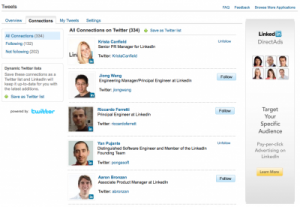I recently polled my Free Job Tips Newsletter members to understand how job seekers were using social and professional networking tools like LinkedIn, Facebook, and Twitter.
I also wanted to understand what job seekers were doing with social networking sites; including, what was working during their job search, and what wasn’t.
The results of the poll, suggest that job seekers don’t understand the impact of their social networking activities on their job search.
The results of the poll were as follows:
When asked if they were using social networking tools in their job search, the results were as follows:
- 75% of respondents said they have a Facebook account, yet only 9% are using it for their job search.
- 57% of respondents said they have a LinkedIn account, and 36% are using it for their job search.
- 24% of respondents said they have a Twitter account, but only 6% are using it for their job search.
The survey clearly shows that job seekers understand the benefits of using social networking sites like Facebook to keep up to date with friends and family members. It also shows that a majority of job seekers have a LinkedIn profile, and a majority of those users are using LinkedIn during their job search, in some form or another. The twitter results are what I would have expected. Twitter isn’t specifically a ‚Äújob search‚Äù or ‚Äúnetworking‚Äù tool, and as a result, is still on the fringe.
![]() The fact that 75% of the respondents have a Facebook account, and yet only 9% of the respondents ‚Äúthink‚Äù they are using Facebook during their job search suggests that job seekers don’t understand how employers are using social networking sites.
The fact that 75% of the respondents have a Facebook account, and yet only 9% of the respondents ‚Äúthink‚Äù they are using Facebook during their job search suggests that job seekers don’t understand how employers are using social networking sites.
Job seekers ‚Äúthink‚Äù that they aren’t using Facebook in their job search, yet they aren’t locking down their Facebook profiles from outside users like employers. For instance, the default security setting for updates on Facebook is ‚ÄúEveryone‚Äù. And ‚ÄúEveryone‚Äù doesn’t just mean your ‚Äúfriends‚Äù or ‚Äúfriends of friends‚Äù, it means the entire Internet, including employers. So, unless you have modified your security settings, each of those little updates might already be publicly visible. Facebook security settings are convoluted, difficult to understand, and constantly changing. As a result, most Facebook users aren’t updating their security settings. (In another post, I’ll spend more time explaining each of the Facebook privacy options.)
In a 2009 study from CareerBuilder.com, 45% of employers stated they were using “social networking sites to confirm or deny a candidate a job offers”. An additional study from CareerXRoads in 2010, suggests that even more employers are expecting to use social networking sites during the recruiting process in the 2010.
At this point, I think it’s safe to say that if you’re applying for a job that requires managing people, relationships, sales, or technical expertise, you can bet that employers are doing a thorough social background check on you during the application process.
 The survey results also seem to show that while 57% of the respondents stated they had a LinkedIn profile, only 36% of the respondents, stated they were using LinkedIn during their job search. It seems like job seekers don’t understand that LinkedIn is the new FREE Resume database for employers. If you want to be found by employers, you need a LinkedIn profile. Employers have tighter budgets and therefore are not spending the $9,000 per user license to access the resume databases of major job boards, like they did a couple years ago. More and more recruiters are using sites like LinkedIn, Facebook, and Twitter where they can search profiles of members for . They have more and better candidates, and basic accounts are free!
The survey results also seem to show that while 57% of the respondents stated they had a LinkedIn profile, only 36% of the respondents, stated they were using LinkedIn during their job search. It seems like job seekers don’t understand that LinkedIn is the new FREE Resume database for employers. If you want to be found by employers, you need a LinkedIn profile. Employers have tighter budgets and therefore are not spending the $9,000 per user license to access the resume databases of major job boards, like they did a couple years ago. More and more recruiters are using sites like LinkedIn, Facebook, and Twitter where they can search profiles of members for . They have more and better candidates, and basic accounts are free!
My interactions with job seekers confirm what I think these results are showing… job seekers are assuming that their social profiles are just that, social, and they aren’t being viewed by employers. Unfortunately, that’s a really dangerous assumption.
While there have been numerous highly publicized cases where employees were fired, or new hires were called out because of their social networking posts (ie. CiscoFatty), the mass majority of job seekers don’t understand the importance of their social profiles.
Employers are watching and don’t seem to know or don’t know what to do about it.
If you’re a job seeker and are still wondering how LinkedIn, Facebook, or Twitter are affecting your job search, or are a little confused about how it all works, subscribe to my free job tips newsletter. I regularly post articles about recent job search strategies.

